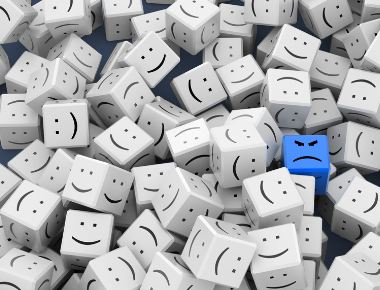DBT Skills: What is Emotional Regulation?
∫⁄¡œÕ¯ Team

DBT Skills: What is Emotional Regulation?
Dialectical behavior therapy (DBT) is a talking therapy that has been specifically adapted for patients who feel their emotions more intensely than others. DBT was initially developed for those with borderline personality disorder – however, it has proven to also be an effective treatment for those with depression and suicidal thoughts.
Emotional regulation is a skill that is developed within DBT therapy – this learned process is intended to help the patient better recognize their negative emotions. Once this is achieved, patients are able to differentiate self-sabotaging actions that transpire out of unwanted feelings. This allows them to be better able to decide whether these urges should be facilitated or ignored. The purpose of emotional regulation is to increase resilience, reduce vulnerability and improve overall mental health.
Why Do We Use Emotional Regulation With DBT?
DBT therapy aims to teach many skills such as mindfulness, distress tolerance, and interpersonal effectiveness. Whilst these skills focus on the process of rectifying negative thoughts, the key difference of emotional regulation is the fact it’s a preventive measure and is intended to help patients first limit negative thoughts from occurring.
Each emotion a person feels has a specific purpose and often indicates how a certain situation makes us feel – these immediate feelings are referred to as ‘gut instincts’. However, in some scenarios these ‘gut instincts’ can often fill people with unnecessary anxieties. Such emotions can often influence a person’s environment, leading them to act in a negative manner towards others or themselves. Emotional regulation equips people with the skills to recognize these feelings and better assess them – on this basis, they can decide whether they would like to hold on to a particular emotion or let it go.
Emotional Regulation Techniques
ABC PLEASE
ABC PLEASE is a popular technique which is used as a part of the emotional regulation process within DBT. The purpose of this method is to eliminate patient vulnerability and unwanted emotions. The process goes as follows:
- Accumulating Positive Experiences: this is when a clinician constantly encourages their patient to pursue activities they enjoy. By accumulating positive experiences, the negative encounters a person may have will seem less frequent.
- Building Mastery: this skill encourages a person to master a new hobby so they can feel accomplished on a regular basis.
- Cope Ahead: facilitating a patient to increase their emotional awareness by recognizing emotional triggers that could make them uncomfortable – this could be doctors’ appointments, tests at school, or even something as trivial as drinks with friends. By identifying these situations, a person can prepare with self-soothing skills beforehand.
PLEASE
The PLEASE guidelines emphasize the importance of physical health and how it can have a large impact on a person’s mental health. If an individual is continually tired, they are more likely to experience negative emotions. PLEASE highlights a few key points:
- Preventing physical illness
- Balanced eating
- Avoiding non prescribed drugs or substances
- Adequate amounts of sleep
- Exercise
Opposite Action
Opposite action refers to another technique within emotional regulation – this is when a patient is encouraged to do the opposite of what they are feeling. For instance, if a person is feeling the urge to isolate out of sadness or shame, the opposite action would be to encourage them to seek companionship. The purpose of opposite action is to try to limit self-destructive behaviors and to disable the power that negative thoughts have on one’s actions.
Though opposite action is very challenging, it has resounding positive effects and can stop a person spiraling into their negative emotions. The more often opposite action is utilized, the easier it becomes to combat unpleasant emotions and unwanted actions.
Now that you’ve learnt more about how to utilize emotional regulation within DBT, you may be interested in reading the rest of our DBT Skills series. If you are looking to become a DBT certified clinician, browse . For more information, do not hesitate to contact our helpful team today.



